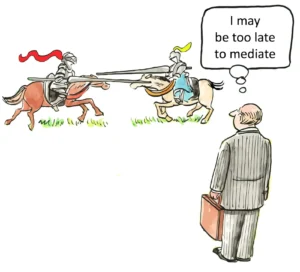Medical Malpractice Caps: Understanding Damage Limitations
The imposition of medical malpractice damage caps has emerged as a contentious issue in the realm of healthcare law and policy. These caps, which limit the amount of compensation that can be awarded to plaintiffs in medical malpractice cases, have been implemented in various forms across numerous states in an attempt to address rising healthcare costs and insurance premiums. However, the efficacy and fairness of these measures remain subjects of intense debate among legal scholars, healthcare professionals, and policymakers.
The concept of damage caps in medical malpractice cases is rooted in the broader movement of tort reform, which seeks to modify the civil justice system to reduce litigation costs and improve the predictability of legal outcomes. Proponents argue that these caps are necessary to curb excessive jury awards and stabilize malpractice insurance rates, ultimately ensuring the availability and affordability of healthcare services. Critics, conversely, contend that such limitations infringe upon the rights of injured patients and may compromise the quality of healthcare by reducing accountability for medical errors.
As of 2025, the landscape of medical malpractice damage caps across the United States presents a complex and varied picture. While some states have implemented strict caps on non-economic damages, others have resisted such measures, citing constitutional concerns or a commitment to preserving jury discretion. The diversity of approaches reflects the ongoing tension between the desire to control healthcare costs and the imperative to provide just compensation for victims of medical negligence.
In California, for instance, recent legislative changes have altered the state’s longstanding damage cap regime. Assembly Bill 35, which took effect on January 1, 2023, established new limits on non-economic damages in medical malpractice cases. For cases not involving a patient’s death, the cap is set at $350,000, with provisions for annual increases over the next decade. This adjustment represents a significant shift from the previous $250,000 cap that had remained unchanged since its implementation in 1975.
The evolution of California’s approach highlights the dynamic nature of medical malpractice legislation and the need for periodic reassessment of damage cap policies. As healthcare costs continue to rise and medical technologies advance, lawmakers must grapple with the challenge of balancing fiscal concerns with the imperative of ensuring adequate compensation for victims of medical errors.
The impact of damage caps extends beyond individual cases, influencing the broader healthcare system and the practice of medicine. Critics argue that these limitations may disproportionately affect certain groups of plaintiffs, such as children, the elderly, or those with severe non-economic losses that are difficult to quantify in monetary terms. Moreover, there are concerns that caps may discourage attorneys from taking on complex medical malpractice cases, potentially leaving some victims without adequate legal representation.
Proponents of damage caps, however, maintain that these measures are essential for preserving access to healthcare services, particularly in high-risk specialties such as obstetrics and neurosurgery. They argue that without such limitations, the threat of large malpractice awards could drive physicians out of practice or force them to engage in defensive medicine, ordering unnecessary tests and procedures to mitigate legal risk.
The debate over medical malpractice damage caps intersects with broader discussions about healthcare reform and patient safety. Some researchers have suggested that caps may have unintended consequences, potentially leading to a decrease in the quality of care. A study published in the Journal of Health Economics found that the implementation of damage caps was associated with a modest increase in adverse patient safety events in hospitals, suggesting that the reduced threat of litigation may weaken incentives for maintaining high standards of care.
The legal challenges to damage caps have been numerous and varied. In several states, courts have struck down cap laws as unconstitutional, often on grounds that they violate equal protection clauses or infringe upon the right to a jury trial. For example, the Florida Supreme Court ruled in 2017 that the state’s cap on non-economic damages in medical malpractice cases violated the equal protection clause of the Florida Constitution. Such rulings underscore the complex interplay between legislative efforts to reform the tort system and constitutional protections.
The variation in damage cap policies across states has led to concerns about forum shopping, where plaintiffs may seek to file lawsuits in jurisdictions with more favorable laws. This phenomenon raises questions about the equity of the legal system and the potential for disparate outcomes based on geographic location rather than the merits of a case.
As the healthcare landscape continues to evolve, policymakers and legal experts are exploring alternative approaches to addressing the challenges posed by medical malpractice litigation. Some have proposed the implementation of health courts, specialized tribunals that would handle medical injury cases outside the traditional tort system. Proponents argue that such courts could provide more consistent and efficient resolution of claims while maintaining fairness for both patients and healthcare providers.
Another area of focus is the promotion of early disclosure and resolution programs, which encourage healthcare providers to promptly acknowledge medical errors, offer apologies, and engage in negotiations with patients or their families to reach fair settlements. These programs aim to reduce the adversarial nature of malpractice claims and potentially decrease the overall cost of resolving disputes.
The intersection of medical malpractice damage caps with other areas of healthcare law adds further complexity to the issue. For instance, the implementation of caps may interact with laws governing informed consent, potentially affecting the standards for disclosure of risks associated with medical procedures. Similarly, the relationship between damage caps and statutes of limitations in medical malpractice cases raises questions about the balance between providing opportunities for redress and ensuring finality in legal proceedings.
The ongoing debate over medical malpractice damage caps also touches upon broader issues of healthcare access and equity. Critics argue that caps may disproportionately impact low-income patients who may be less able to absorb the economic consequences of medical errors. Conversely, proponents contend that by helping to control malpractice insurance costs, caps contribute to maintaining the availability of medical services in underserved areas.
The role of insurance companies in the medical malpractice landscape is another critical factor to consider. While damage caps are often justified as a means of stabilizing insurance premiums, some studies have questioned the extent to which savings from caps are passed on to healthcare providers in the form of lower rates. The complex interplay between tort reform measures, insurance market dynamics, and healthcare costs remains a subject of ongoing research and debate.
As technology continues to advance, new challenges emerge in the realm of medical malpractice. The increasing use of artificial intelligence in healthcare, for example, raises novel questions about liability and the applicability of traditional malpractice frameworks. How damage caps might apply in cases involving AI-assisted medical decisions or errors is an area that lawmakers and courts will likely need to address in the coming years.
The COVID-19 pandemic has also introduced new considerations into the medical malpractice landscape. Many states implemented temporary liability protections for healthcare providers during the height of the crisis, recognizing the unprecedented challenges faced by the medical community. As these protections expire, questions arise about how the pandemic experience might influence future approaches to medical malpractice policy, including the role of damage caps in extraordinary circumstances.
The debate over medical malpractice damage caps also intersects with discussions about healthcare quality improvement and patient safety initiatives. Some argue that a more comprehensive approach to reducing medical errors and improving outcomes could mitigate the need for strict damage caps. This perspective emphasizes the importance of systemic changes in healthcare delivery, such as enhanced communication protocols, improved electronic health record systems, and ongoing professional education.
The impact of damage caps on specific medical specialties is another area of concern. High-risk specialties such as obstetrics and neurosurgery have been particularly affected by malpractice insurance costs, leading to concerns about access to care in these fields. Proponents of caps argue that they are essential for maintaining a robust workforce in these specialties, while critics contend that alternative approaches to risk management and quality improvement could achieve similar goals without compromising patient rights.
The role of expert witnesses in medical malpractice cases is another factor influenced by damage cap policies. Caps may affect the willingness of medical experts to participate in litigation, potentially impacting the quality and availability of expert testimony. This, in turn, could influence the outcome of cases and the overall landscape of medical malpractice litigation.
As states continue to grapple with the issue of medical malpractice damage caps, some are exploring hybrid approaches that seek to balance competing interests. For example, some jurisdictions have implemented sliding scale caps that adjust based on the severity of the injury or the economic impact on the plaintiff. Others have considered exceptions to caps for cases involving gross negligence or intentional misconduct.
The interplay between federal and state laws in the realm of medical malpractice adds another layer of complexity to the damage cap debate. While medical malpractice law has traditionally been the domain of state regulation, there have been periodic efforts at the federal level to implement national standards for damage caps. These proposals have faced significant opposition, with critics arguing that they infringe upon state sovereignty and fail to account for local variations in healthcare costs and legal traditions.
The impact of damage caps on settlement negotiations in medical malpractice cases is an important consideration. Caps may influence the bargaining positions of both plaintiffs and defendants, potentially altering the dynamics of pre-trial negotiations and affecting the likelihood of cases proceeding to trial. Some argue that caps provide greater predictability in outcomes, facilitating settlements, while others contend that they may discourage fair compensation for severely injured plaintiffs.
The role of alternative dispute resolution (ADR) mechanisms in medical malpractice cases is another area influenced by the presence of damage caps. Mediation and arbitration processes may be affected by the knowledge that potential awards are limited, potentially altering the incentives for parties to engage in these alternative forums for dispute resolution.
The ethical implications of medical malpractice damage caps are a subject of ongoing debate within the medical and legal communities. Questions arise about the moral justification for limiting compensation to victims of medical negligence, particularly in cases involving catastrophic injuries or lifelong disabilities. This ethical dimension adds depth to the policy discussions surrounding damage caps and underscores the need for a nuanced approach that considers both practical and moral considerations.
The impact of damage caps on medical education and training is another area worthy of examination. Some argue that the presence of caps may influence the emphasis placed on risk management and legal considerations in medical curricula, potentially affecting how future healthcare providers approach patient care and communication.
As the healthcare system continues to evolve, the role of telemedicine and remote care introduces new considerations for medical malpractice policy. The application of damage caps to cases involving virtual consultations or AI-assisted diagnoses may require careful consideration and potentially new legal frameworks.
The intersection of medical malpractice damage caps with healthcare privacy laws, such as HIPAA, presents additional complexities. The disclosure of medical information in the context of malpractice litigation must be balanced against patient privacy rights, a challenge that may be influenced by the presence of damage caps and their impact on the litigation process.
The ongoing debate over medical malpractice damage caps reflects broader societal discussions about the balance between individual rights and collective interests in healthcare policy. As the United States continues to grapple with issues of healthcare access, quality, and cost, the role of tort reform measures like damage caps will likely remain a subject of intense scrutiny and debate.
In conclusion, the landscape of medical malpractice damage caps in 2025 presents a complex and evolving picture. While these measures continue to be implemented and defended in many jurisdictions as a means of controlling healthcare costs and maintaining access to medical services, they face ongoing challenges on legal, ethical, and practical grounds. As policymakers, healthcare providers, and legal professionals navigate this terrain, it is clear that a nuanced and multifaceted approach is necessary to address the competing interests at stake. The future of medical malpractice policy will likely require innovative solutions that balance the need for fiscal responsibility with the imperative of ensuring justice and quality care for all patients.
- https://nabip.org/media/8331/medical_malpractice_cap.pdf
- https://centerjd.org/content/fact-sheet-medical-malpractice-%E2%80%9Ccaps%E2%80%9D-can-harm-patient-safety-and-increase-health-care-costs
- https://1800lionlaw.com/damage-caps-by-state-personal-injury-med-mal/
- https://www.fifthavenueagency.com/medical-malpractice-trends-2025/
- https://gagemathers.com/medical-malpractice-damage-caps-are-bad/
- https://www.ama-assn.org/system/files/mlr-state-laws-chart-I.pdf
- https://www.cmfgroup.com/blog/healthcare-professionals/how-medical-malpractice-insurance-rates-are-set-and-why-theyre-increasing/


















